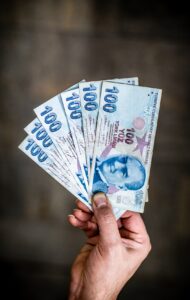The COVID-19 pandemic has had a significant impact on global financial markets, including the foreign exchange market. One of the currency pairs most affected by this crisis is the USD to INR (United States Dollar to Indian Rupee) exchange rate. In this article, we will explore the reasons behind the volatility in this currency pair and discuss some ways to mitigate the associated risks.
The USD to INR exchange rate is of great importance for individuals, businesses, and governments in both the United States and India. It affects trade flows, investment decisions, and the overall economic stability of both countries. Therefore, any significant changes in this exchange rate can have far-reaching consequences.
Since the outbreak of the COVID-19 pandemic, the USD to INR exchange rate has experienced significant fluctuations. The initial impact was seen in March 2020 when most countries imposed strict lockdown measures to contain the spread of the virus. These measures led to a sharp decline in economic activity and increased uncertainty, resulting in a flight to safety.
During times of uncertainty, investors tend to seek refuge in safe-haven currencies such as the US dollar. As a result, the demand for the US dollar increased, causing its value to rise against most other currencies, including the Indian rupee. This led to a depreciation of the INR against the USD, meaning that it took more rupees to buy one US dollar.
Another factor that contributed to the depreciation of the INR was the decline in global oil prices. India is heavily reliant on oil imports, and therefore, any significant drop in oil prices negatively impacts its trade balance and currency value. As the pandemic caused a decrease in global demand for oil, the INR came under additional pressure.
Furthermore, the economic impact of the pandemic on India was severe. The country experienced a sharp contraction in GDP growth, increased unemployment, and a decline in consumer spending. These factors further weakened the INR against the USD.
So, what can individuals and businesses do to mitigate the risks associated with the volatility in the USD to INR exchange rate?
Firstly, it is crucial to stay informed about the latest developments in the global economy and the factors that influence the exchange rate. Keeping track of economic indicators, central bank policies, and geopolitical events can help individuals and businesses make more informed decisions.
Secondly, hedging strategies can be employed to mitigate currency risk. Hedging involves taking positions in the forex market that offset potential losses from adverse exchange rate movements. For example, businesses can enter into forward contracts to lock in a specific exchange rate for future transactions, thus protecting themselves from unfavorable exchange rate fluctuations.
Thirdly, diversifying currency exposure can help reduce risk. By holding a diversified portfolio of currencies, individuals and businesses can minimize the impact of a significant depreciation in a single currency.
Moreover, it is advisable to consult with forex experts or financial advisors who can provide guidance based on individual risk tolerance and investment objectives.
In conclusion, the impact of the COVID-19 pandemic on the USD to INR exchange rate has been significant. The depreciation of the INR against the USD can be attributed to various factors, including increased demand for the US dollar during times of uncertainty, declining global oil prices, and the economic impact of the pandemic on India. To mitigate the associated risks, individuals and businesses should stay informed, employ hedging strategies, diversify currency exposure, and seek professional advice. By taking these measures, they can navigate the volatility in the forex market and protect their financial interests.





